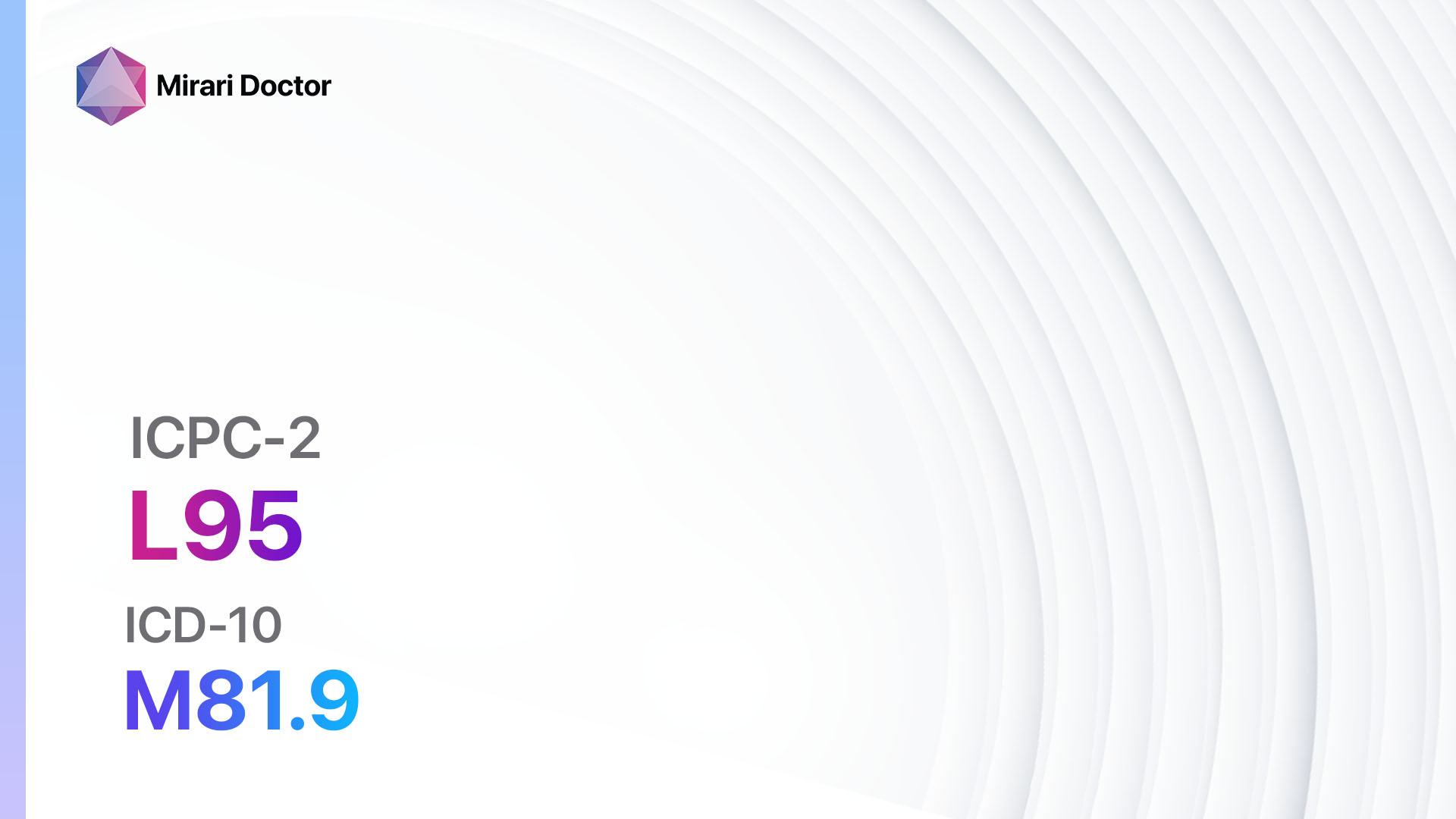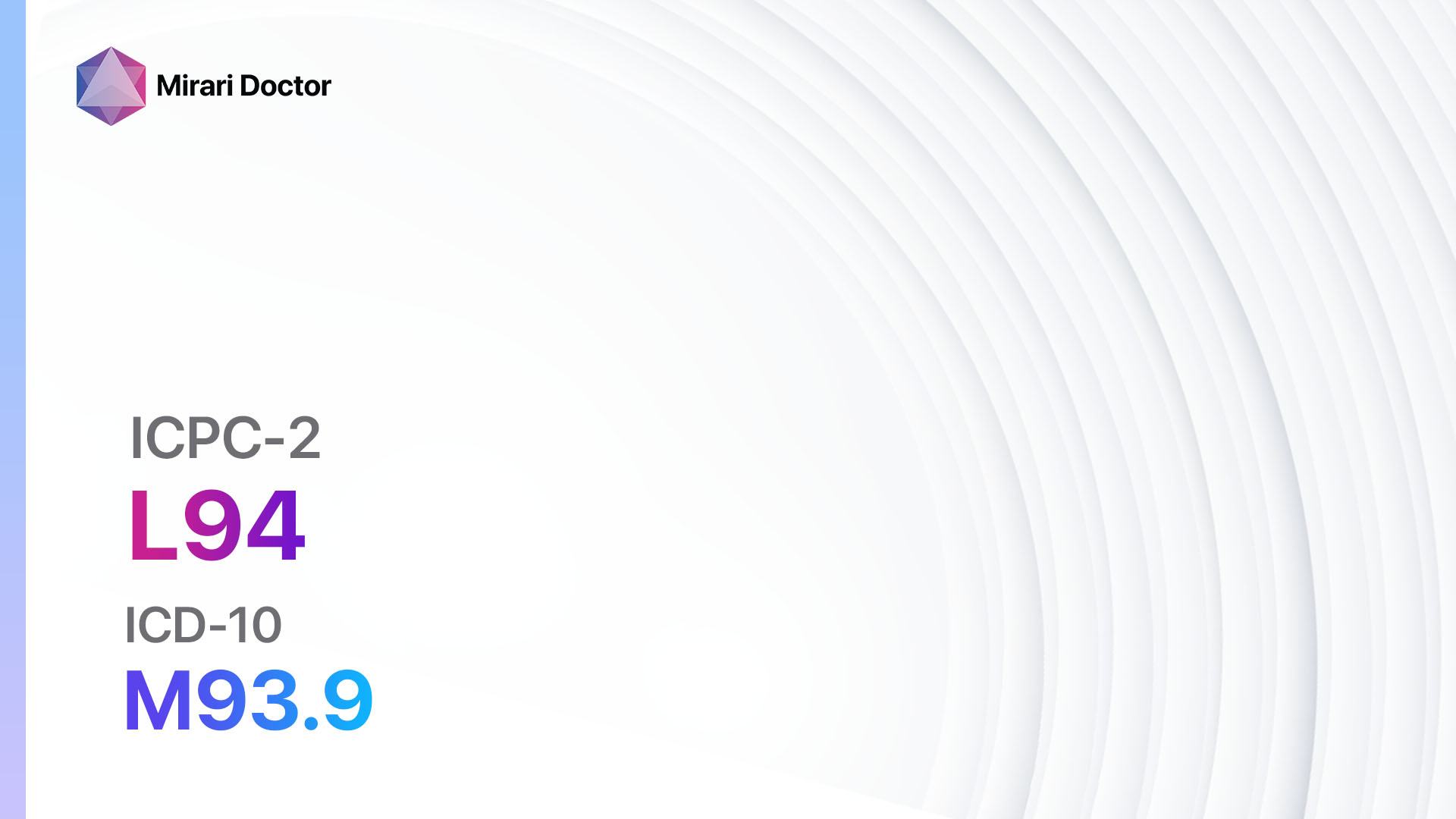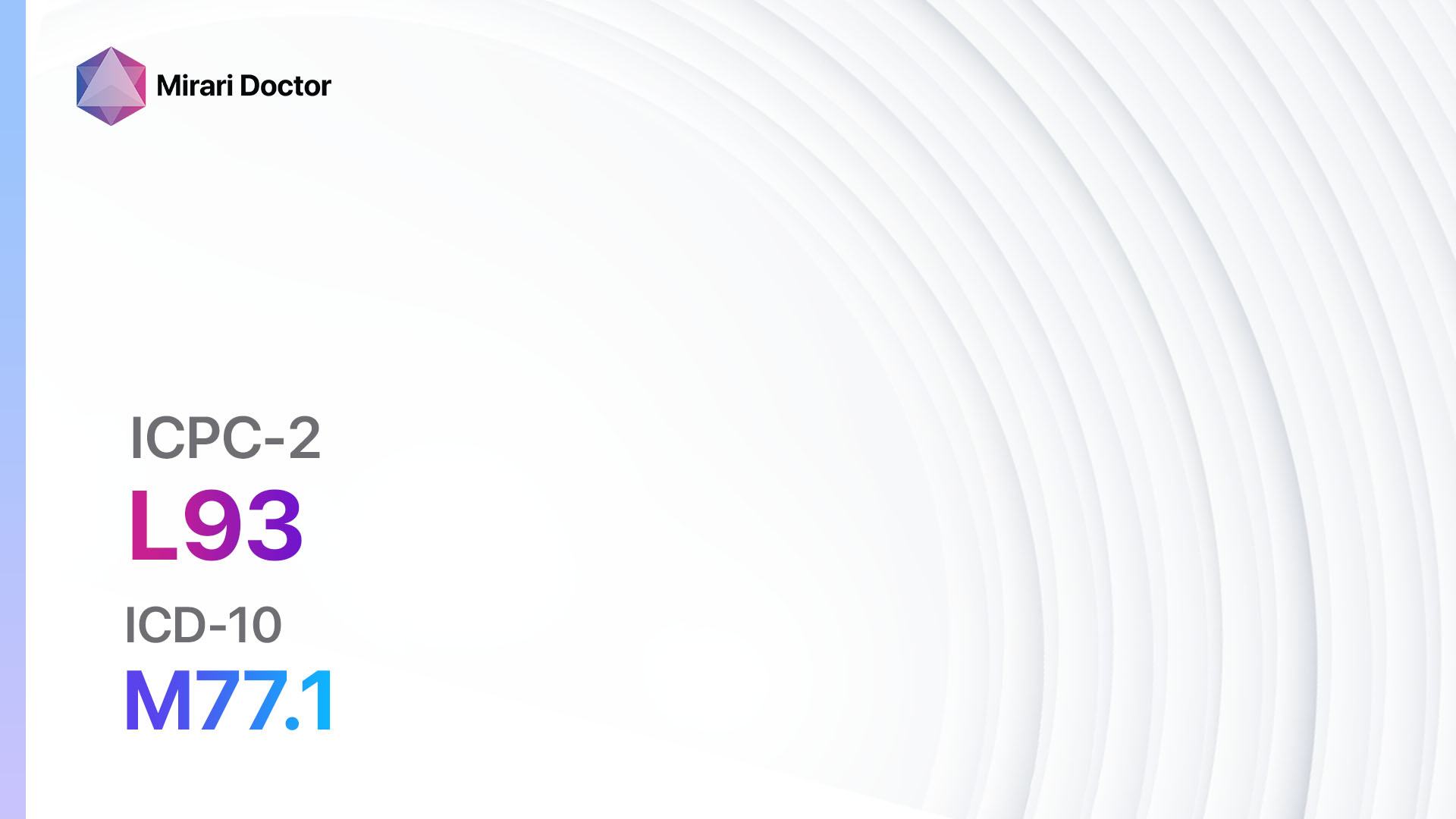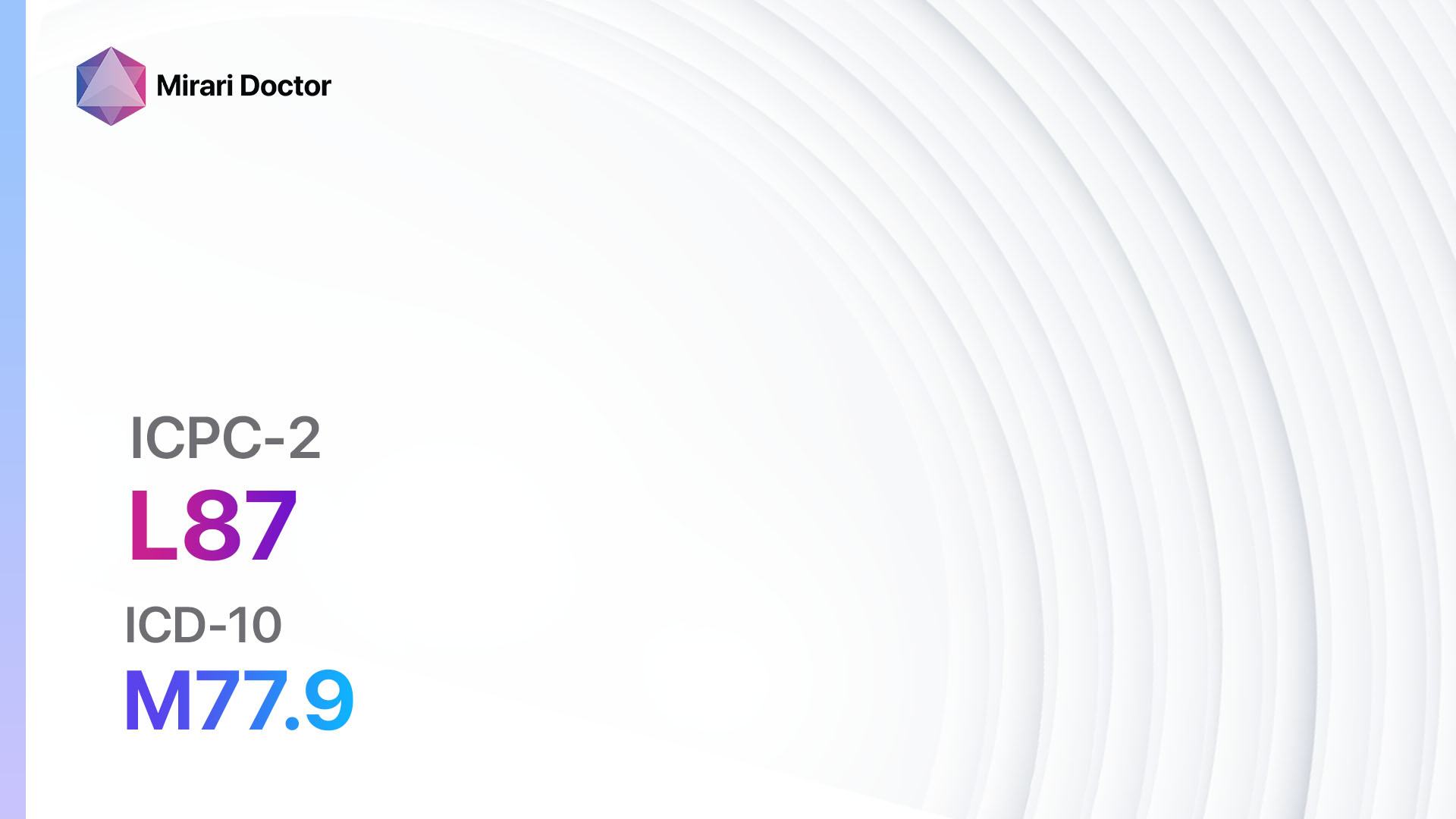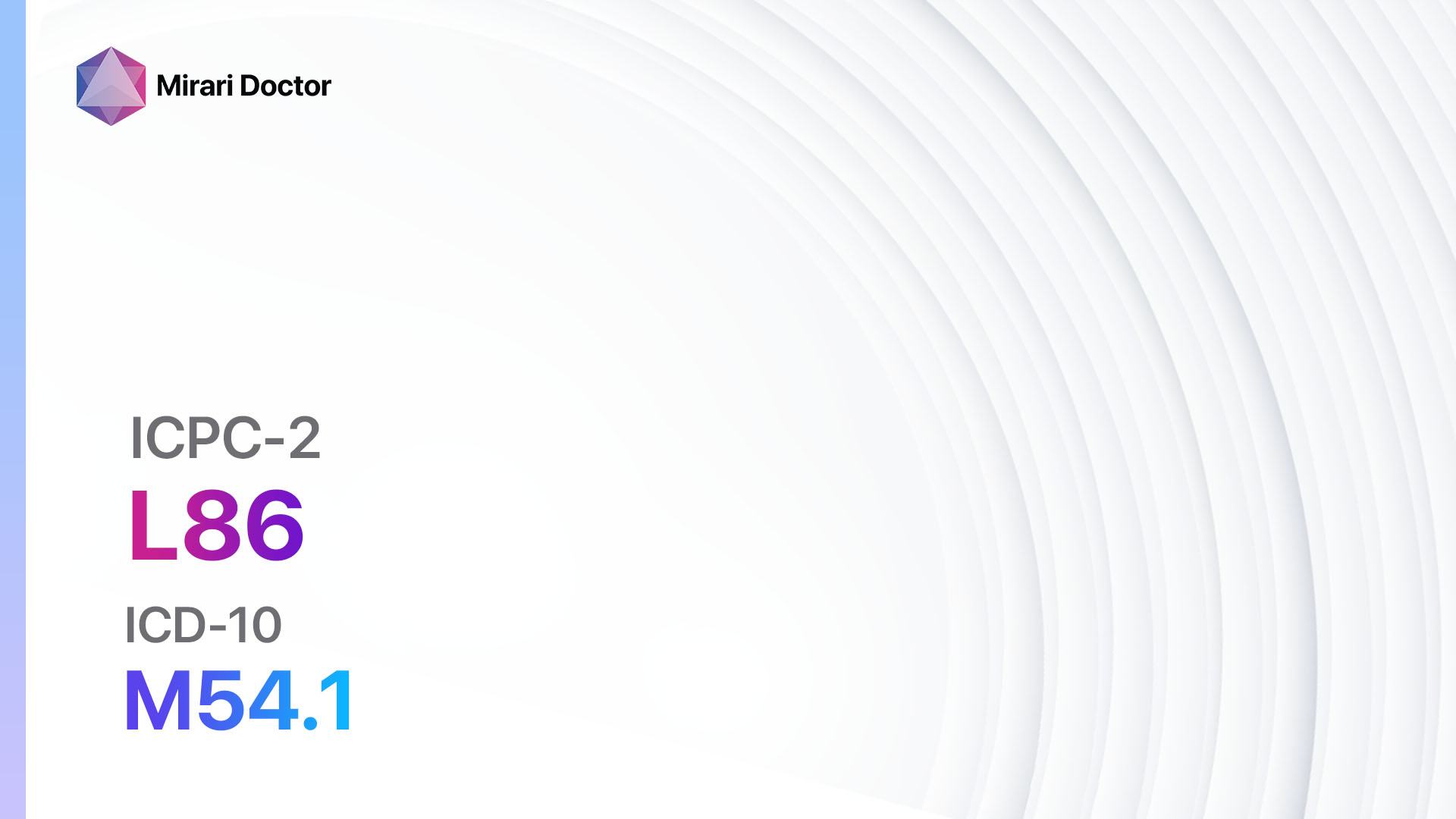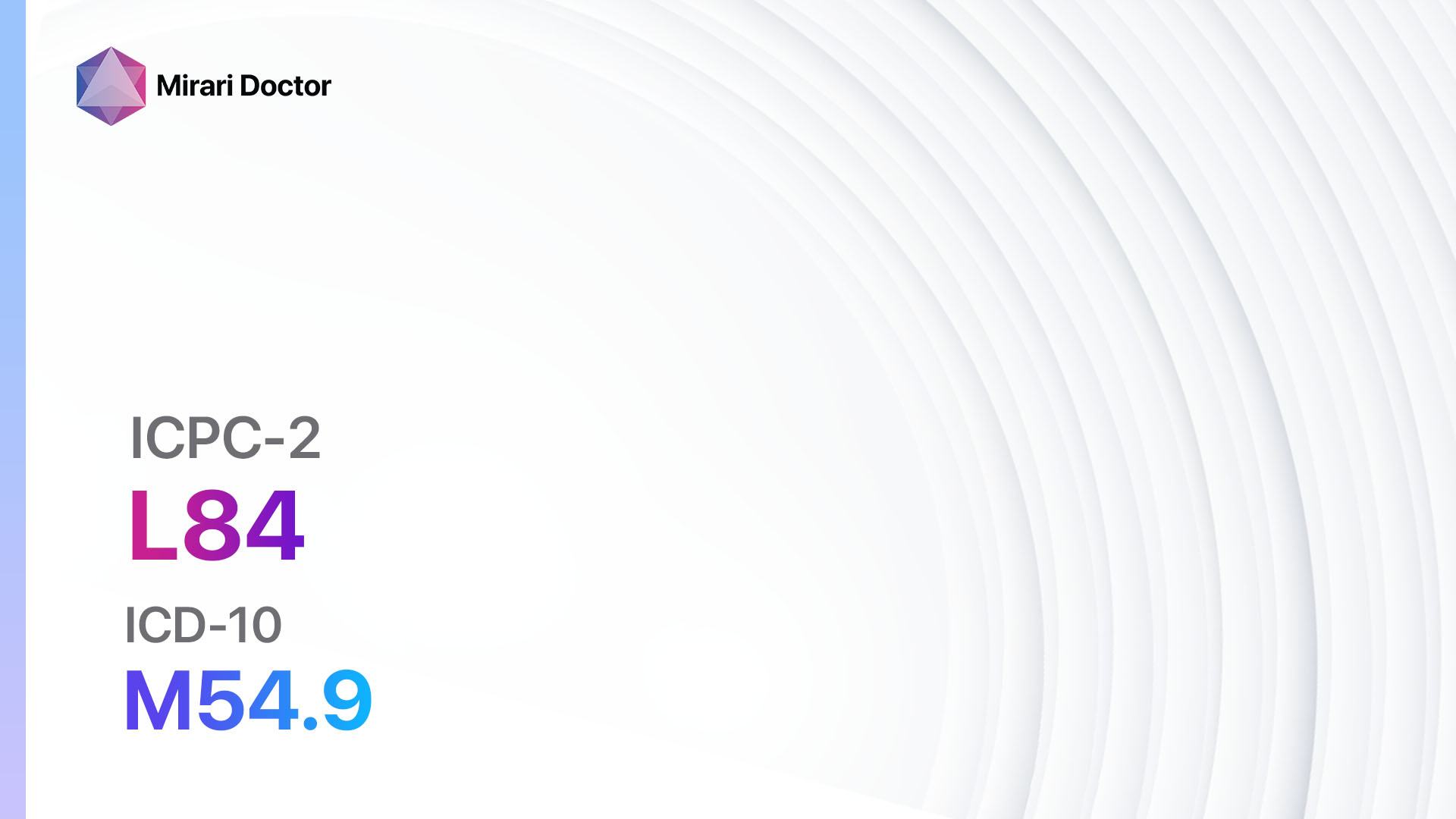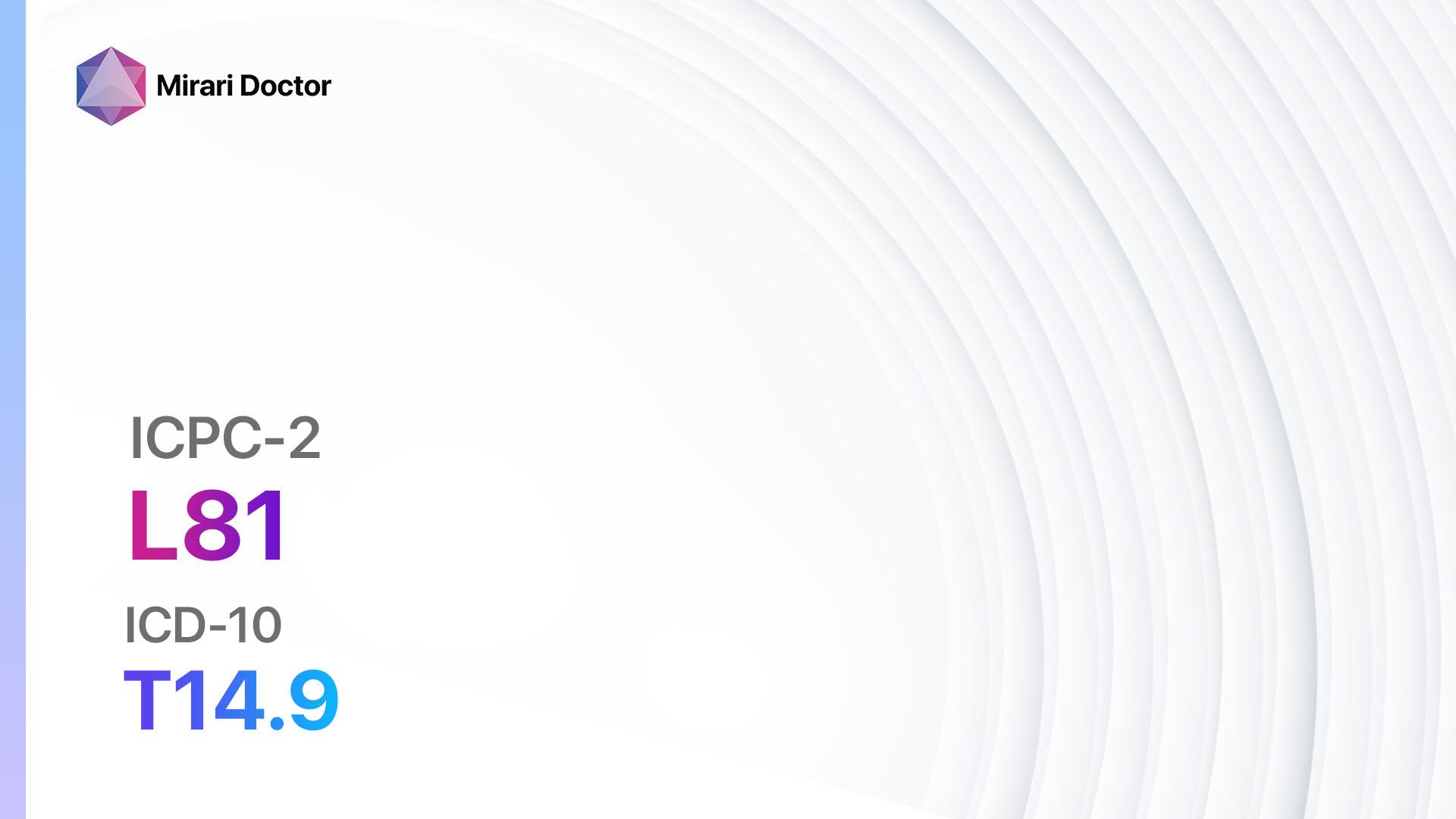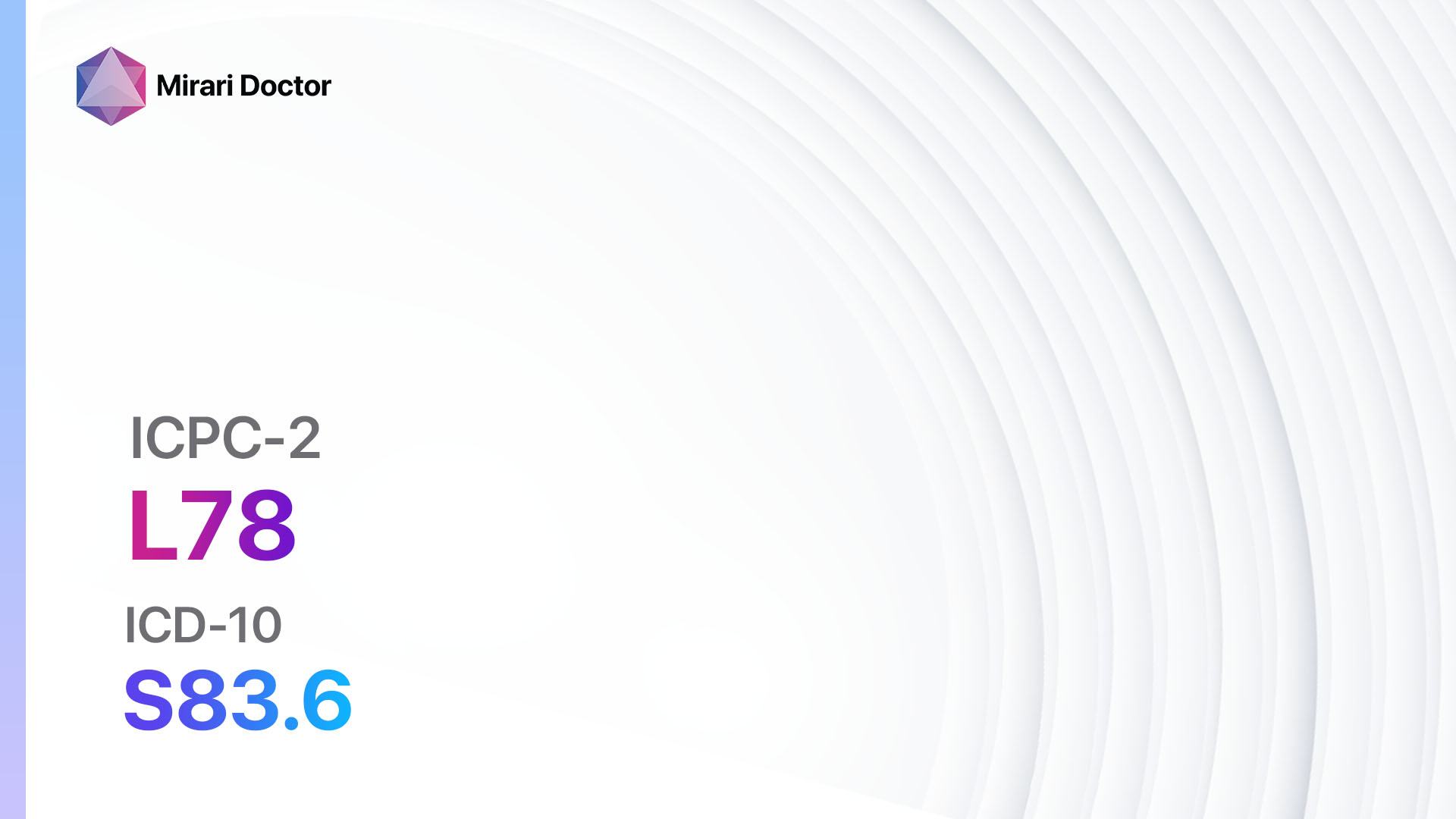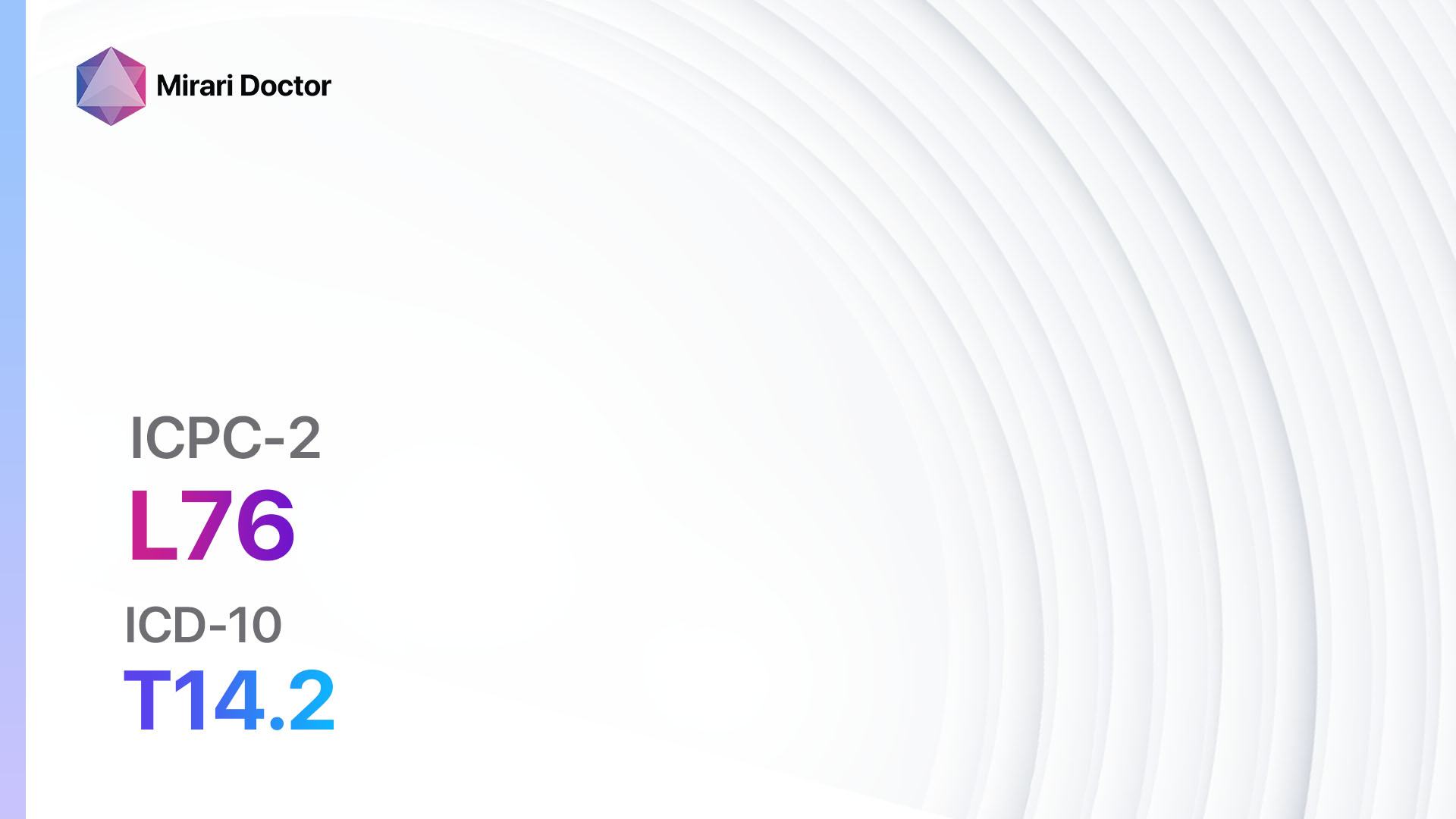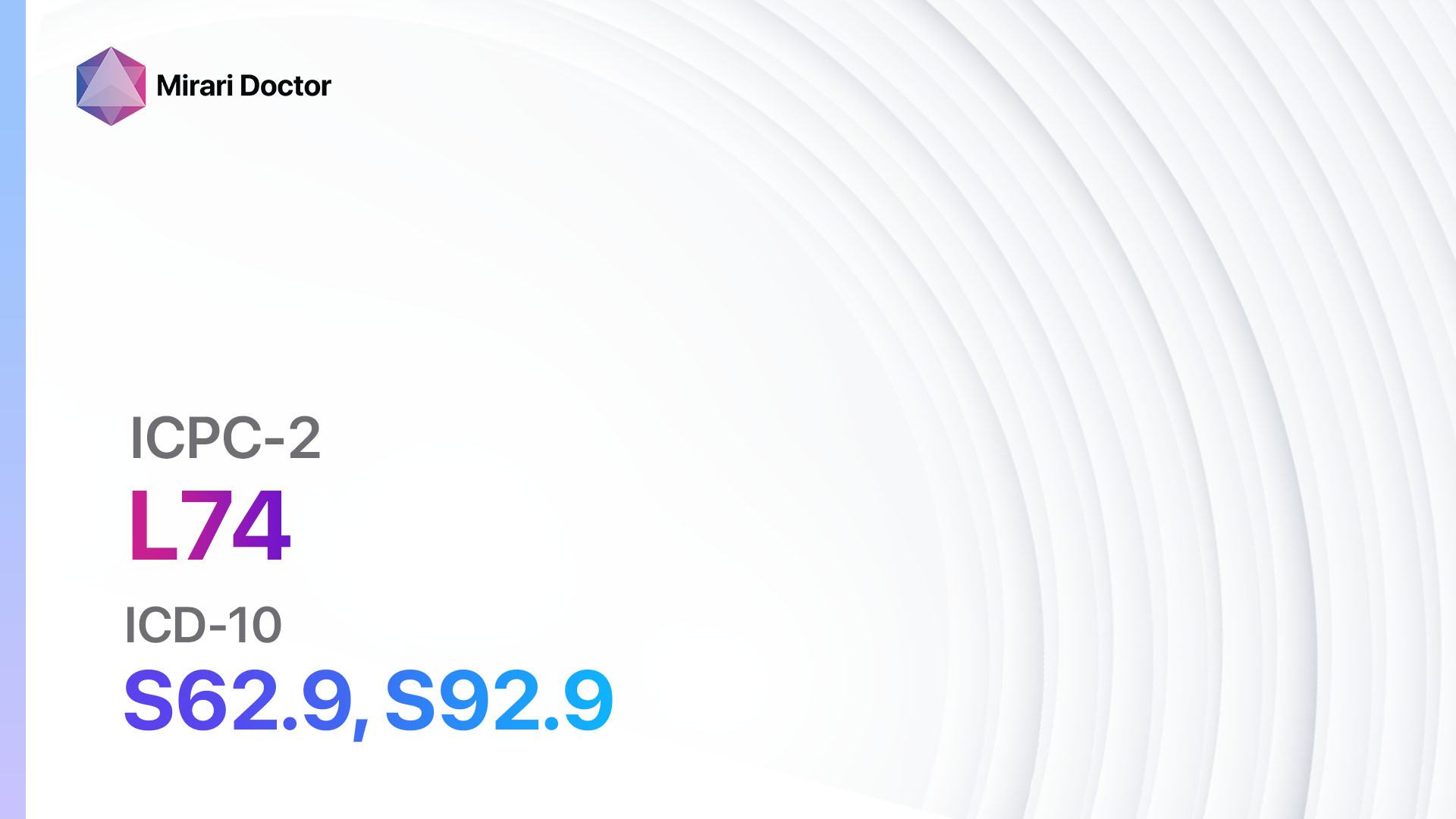
Introduction
Osteoarthrosis of the hip, also known as hip osteoarthritis, is a degenerative joint disease that affects the hip joint. It is characterized by the breakdown of cartilage in the joint, leading to pain, stiffness, and reduced mobility.[1] This guide aims to provide an overview of the symptoms, causes, diagnostic steps, possible interventions, and lifestyle interventions for osteoarthrosis of the hip.
Codes
Symptoms
- Joint pain: Dull, aching pain in the hip joint that worsens with activity and improves with rest.[4]
- Stiffness: Difficulty moving the hip joint, especially after periods of inactivity.
- Reduced range of motion: Limited ability to move the hip joint fully.
- Swelling: Inflammation and swelling around the hip joint.
- Clicking or grinding sensation: Sensation of clicking or grinding in the hip joint during movement.[5]
Causes
- Age: Osteoarthrosis of the hip is more common in older adults.
- Previous joint injury: A history of hip injury or trauma can increase the risk of developing osteoarthrosis.
- Obesity: Excess weight puts additional stress on the hip joint, increasing the risk of osteoarthrosis.
- Genetics: Some individuals may have a genetic predisposition to developing osteoarthrosis.
- Joint abnormalities: Structural abnormalities in the hip joint can contribute to the development of osteoarthrosis.[6]
Diagnostic Steps
Medical History
- Gather information about the patient’s symptoms, including the duration and severity of pain, stiffness, and reduced mobility.
- Identify any risk factors, such as previous joint injuries, obesity, or family history of osteoarthrosis.
- Assess the impact of symptoms on the patient’s daily activities and quality of life.[7]
Physical Examination
- Perform a thorough physical examination of the hip joint, assessing for tenderness, swelling, and range of motion.
- Look for specific signs, such as crepitus (a grating or grinding sensation) during joint movement.
- Evaluate the patient’s gait and posture to identify any abnormalities or compensatory movements.[8]
Laboratory Tests
- Blood tests: Although there are no specific blood tests to diagnose osteoarthrosis, they may be useful in ruling out other conditions, such as rheumatoid arthritis or infection.
- Joint fluid analysis: In some cases, a sample of fluid may be taken from the hip joint to rule out other causes of joint pain, such as infection or gout.[9]
Diagnostic Imaging
- X-rays: X-rays can show the presence of joint space narrowing, osteophytes (bone spurs), and other signs of osteoarthrosis.
- Magnetic resonance imaging (MRI): MRI scans can provide more detailed images of the hip joint, allowing for a better assessment of cartilage and soft tissue damage.
- Computed tomography (CT) scan: CT scans may be used to evaluate the hip joint in more detail, particularly in cases where MRI is contraindicated.[10]
Other Tests
- Bone scan: A bone scan may be recommended to assess the overall health of the hip joint and identify any areas of increased bone activity.
- Arthroscopy: In some cases, arthroscopy may be performed to directly visualize the hip joint and assess the extent of cartilage damage.
Follow-up and Patient Education
- Schedule regular follow-up appointments to monitor the progression of symptoms and adjust treatment as needed.
- Provide patient education on self-management strategies, such as exercise, weight management, and pain management techniques.
- Discuss the importance of maintaining a healthy lifestyle and adhering to treatment recommendations.
Possible Interventions
Traditional Interventions
Medications:
Top 5 drugs for Osteoarthrosis of hip:
- Acetaminophen (e.g., Tylenol):
- Cost: $5-$15 for a month’s supply.
- Contraindications: Liver disease, alcoholism.
- Side effects: Rare at recommended doses, but can cause liver damage in high doses.
- Severe side effects: Allergic reactions, liver failure.
- Drug interactions: Warfarin, alcohol.
- Warning: Avoid exceeding the recommended dose to prevent liver damage.
- Nonsteroidal anti-inflammatory drugs (NSAIDs) (e.g., Ibuprofen, Naproxen):
- Cost: $5-$20 for a month’s supply.
- Contraindications: History of gastrointestinal bleeding, kidney disease.
- Side effects: Upset stomach, heartburn.
- Severe side effects: Stomach ulcers, kidney damage.
- Drug interactions: Aspirin, blood thinners.
- Warning: Long-term use may increase the risk of cardiovascular events and gastrointestinal complications.
- Corticosteroid injections (e.g., Triamcinolone, Methylprednisolone):
- Cost: $50-$200 per injection.
- Contraindications: Active infection, bleeding disorders.
- Side effects: Temporary pain at the injection site, facial flushing.
- Severe side effects: Joint infection, tendon rupture.
- Drug interactions: None.
- Warning: Limit the frequency of injections to reduce the risk of joint damage.
- Hyaluronic acid injections (e.g., Synvisc, Orthovisc):
- Cost: $500-$1000 per injection.
- Contraindications: Active joint infection, skin infection.
- Side effects: Temporary pain and swelling at the injection site.
- Severe side effects: Joint infection, allergic reactions.
- Drug interactions: None.
- Warning: Multiple injections may be required for optimal results.
- Tramadol:
- Cost: $10-$30 for a month’s supply.
- Contraindications: History of seizures, addiction.
- Side effects: Nausea, dizziness.
- Severe side effects: Seizures, serotonin syndrome.
- Drug interactions: Serotonin reuptake inhibitors, monoamine oxidase inhibitors.
- Warning: Use with caution in patients with a history of substance abuse or addiction.
Alternative Drugs:
- Capsaicin cream: Topical cream that can help relieve pain. Cost: $10-$20 per tube.
- Glucosamine and chondroitin: Dietary supplements that may help improve joint health. Cost: $20-$40 for a month’s supply.
- Duloxetine: An antidepressant that can also help relieve chronic pain. Cost: $20-$50 for a month’s supply.
- Topical NSAIDs: Creams or gels that can provide localized pain relief. Cost: $10-$30 per tube.
- Opioids: Reserved for severe pain that does not respond to other treatments. Cost: Varies depending on the specific medication.
Surgical Procedures:
- Total hip replacement: Surgical removal of the damaged hip joint and replacement with an artificial joint. Cost: $30,000-$50,000.
- Hip resurfacing: Surgical reshaping of the hip joint, preserving more of the patient’s natural bone. Cost: $25,000-$40,000.
- Arthroscopy: Minimally invasive procedure to remove loose fragments or repair damaged cartilage. Cost: $10,000-$20,000.
Alternative Interventions
- Physical therapy: Targeted exercises and stretches to improve joint mobility and strengthen surrounding muscles. Cost: $50-$150 per session.
- Acupuncture: May help reduce pain and improve joint function. Cost: $60-$120 per session.
- Chiropractic care: Manual manipulation of the spine and joints to relieve pain and improve mobility. Cost: $50-$200 per session.
- Massage therapy: Deep tissue massage to reduce muscle tension and improve circulation. Cost: $60-$120 per session.
- Yoga: Gentle stretching and strengthening exercises to improve flexibility and joint function. Cost: $10-$20 per class.
Lifestyle Interventions
- Weight management: Losing excess weight can reduce stress on the hip joint. Cost: Varies depending on the chosen weight loss method.
- Low-impact exercise: Engaging in activities such as swimming or cycling can help improve joint mobility without putting excessive strain on the hip joint. Cost: Varies depending on the chosen activity.
- Heat and cold therapy: Applying heat or cold packs to the hip joint can help reduce pain and inflammation. Cost: $10-$30 for heat or cold packs.
- Assistive devices: Using a cane or walker can help reduce pressure on the hip joint during walking. Cost: Varies depending on the chosen device.
- Physical activity modification: Avoiding high-impact activities and modifying movements that exacerbate hip pain can help manage symptoms. Cost: None.
It is important to note that the cost ranges provided are approximate and may vary depending on the location and availability of the interventions.
Mirari Cold Plasma Alternative Intervention
Understanding Mirari Cold Plasma
- Safe and Non-Invasive Treatment: Mirari Cold Plasma is a safe and non-invasive treatment option for various skin conditions. It does not require incisions, minimizing the risk of scarring, bleeding, or tissue damage.
- Efficient Extraction of Foreign Bodies: Mirari Cold Plasma facilitates the removal of foreign bodies from the skin by degrading and dissociating organic matter, allowing easier access and extraction.
- Pain Reduction and Comfort: Mirari Cold Plasma has a local analgesic effect, providing pain relief during the treatment, making it more comfortable for the patient.
- Reduced Risk of Infection: Mirari Cold Plasma has antimicrobial properties, effectively killing bacteria and reducing the risk of infection.
- Accelerated Healing and Minimal Scarring: Mirari Cold Plasma stimulates wound healing and tissue regeneration, reducing healing time and minimizing the formation of scars.
Mirari Cold Plasma Prescription
Video instructions for using Mirari Cold Plasma Device – L89 Osteoarthrosis of hip (ICD-10:M16.9)
| Mild | Moderate | Severe |
| Mode setting: 2 (Wound Healing) Location: 0 (Localized) Morning: 15 minutes, Evening: 15 minutes |
Mode setting: 2 (Wound Healing) Location: 0 (Localized) Morning: 30 minutes, Lunch: 30 minutes, Evening: 30 minutes |
Mode setting: 2 (Wound Healing) Location: 0 (Localized) Morning: 30 minutes, Lunch: 30 minutes, Evening: 30 minutes |
| Mode setting: 9 (Arthritis) Location: 0 (Localized) Morning: 15 minutes, Evening: 15 minutes |
Mode setting: 9 (Arthritis) Location: 0 (Localized) Morning: 30 minutes, Lunch: 30 minutes, Evening: 30 minutes |
Mode setting: 9 (Arthritis) Location: 0 (Localized) Morning: 30 minutes, Lunch: 30 minutes, Evening: 30 minutes |
| Mode setting: 7 (Immunotherapy) Location: 1 (Sacrum) Morning: 15 minutes, Evening: 15 minutes |
Mode setting: 7 (Immunotherapy) Location: 1 (Sacrum) Morning: 30 minutes, Lunch: 30 minutes, Evening: 30 minutes |
Mode setting: 7 (Immunotherapy) Location: 1 (Sacrum) Morning: 30 minutes, Lunch: 30 minutes, Evening: 30 minutes |
| Total Morning: 45 minutes approx. $7.50 USD, Evening: 45 minutes approx. $7.50 USD |
Total Morning: 90 minutes approx. $15 USD, Lunch: 90 minutes approx. $15 USD, Evening: 90 minutes approx. $15 USD, |
Total Morning: 90 minutes approx. $15 USD, Lunch: 90 minutes approx. $15 USD, Evening: 90 minutes approx. $15 USD, |
| Usual treatment for 7-60 days approx. $105 USD – $900 USD | Usual treatment for 6-8 weeks approx. $1,890 USD – $2,520 USD |
Usual treatment for 3-6 months approx. $4,050 USD – $8,100 USD
|
 |
|
Use the Mirari Cold Plasma device to treat Osteoarthrosis of hip effectively.
WARNING: MIRARI COLD PLASMA IS DESIGNED FOR THE HUMAN BODY WITHOUT ANY ARTIFICIAL OR THIRD PARTY PRODUCTS. USE OF OTHER PRODUCTS IN COMBINATION WITH MIRARI COLD PLASMA MAY CAUSE UNPREDICTABLE EFFECTS, HARM OR INJURY. PLEASE CONSULT A MEDICAL PROFESSIONAL BEFORE COMBINING ANY OTHER PRODUCTS WITH USE OF MIRARI.
Step 1: Cleanse the Skin
- Start by cleaning the affected area of the skin with a gentle cleanser or mild soap and water. Gently pat the area dry with a clean towel.
Step 2: Prepare the Mirari Cold Plasma device
- Ensure that the Mirari Cold Plasma device is fully charged or has fresh batteries as per the manufacturer’s instructions. Make sure the device is clean and in good working condition.
- Switch on the Mirari device using the power button or by following the specific instructions provided with the device.
- Some Mirari devices may have adjustable settings for intensity or treatment duration. Follow the manufacturer’s instructions to select the appropriate settings based on your needs and the recommended guidelines.
Step 3: Apply the Device
- Place the Mirari device in direct contact with the affected area of the skin. Gently glide or hold the device over the skin surface, ensuring even coverage of the area experiencing.
- Slowly move the Mirari device in a circular motion or follow a specific pattern as indicated in the user manual. This helps ensure thorough treatment coverage.
Step 4: Monitor and Assess:
- Keep track of your progress and evaluate the effectiveness of the Mirari device in managing your Osteoarthrosis of hip. If you have any concerns or notice any adverse reactions, consult with your health care professional.
Note
This guide is for informational purposes only and should not replace the advice of a medical professional. Always consult with your healthcare provider or a qualified medical professional for personal advice, diagnosis, or treatment. Do not solely rely on the information presented here for decisions about your health. Use of this information is at your own risk. The authors of this guide, nor any associated entities or platforms, are not responsible for any potential adverse effects or outcomes based on the content.
Mirari Cold Plasma System Disclaimer
- Purpose: The Mirari Cold Plasma System is a Class 2 medical device designed for use by trained healthcare professionals. It is registered for use in Thailand and Vietnam. It is not intended for use outside of these locations.
- Informational Use: The content and information provided with the device are for educational and informational purposes only. They are not a substitute for professional medical advice or care.
- Variable Outcomes: While the device is approved for specific uses, individual outcomes can differ. We do not assert or guarantee specific medical outcomes.
- Consultation: Prior to utilizing the device or making decisions based on its content, it is essential to consult with a Certified Mirari Tele-Therapist and your medical healthcare provider regarding specific protocols.
- Liability: By using this device, users are acknowledging and accepting all potential risks. Neither the manufacturer nor the distributor will be held accountable for any adverse reactions, injuries, or damages stemming from its use.
- Geographical Availability: This device has received approval for designated purposes by the Thai and Vietnam FDA. As of now, outside of Thailand and Vietnam, the Mirari Cold Plasma System is not available for purchase or use.
References
- Glyn-Jones S, et al. Osteoarthritis. Lancet. 2015;386(9991):376-387.
- World Organization of Family Doctors. ICPC-2: International Classification of Primary Care. Oxford: Oxford University Press; 1998.
- World Health Organization. International Statistical Classification of Diseases and Related Health Problems, 10th Revision. Geneva: WHO; 2019.
- Zhang Y, Jordan JM. Epidemiology of osteoarthritis. Clin Geriatr Med. 2010;26(3):355-369.
- Altman R, et al. American College of Rheumatology criteria for the classification and reporting of osteoarthritis of the hip. Arthritis Rheum. 1991;34(5):505-514.
- Felson DT. Osteoarthritis as a disease of mechanics. Osteoarthritis Cartilage. 2013;21(1):10-15.
- Lane NE. Clinical practice. Osteoarthritis of the hip. N Engl J Med. 2007;357(14):1413-1421.
- Cibulka MT, et al. Hip pain and mobility deficits—hip osteoarthritis: revision 2017. J Orthop Sports Phys Ther. 2017;47(6):A1-A37.
- Sakellariou G, et al. EULAR recommendations for the use of imaging in the clinical management of peripheral joint osteoarthritis. Ann Rheum Dis. 2017;76(9):1484-1494.
- Hunter DJ, Guermazi A. Imaging techniques in osteoarthritis. PM R. 2012;4(5 Suppl):S68-74.
Related articles
Made in USA



